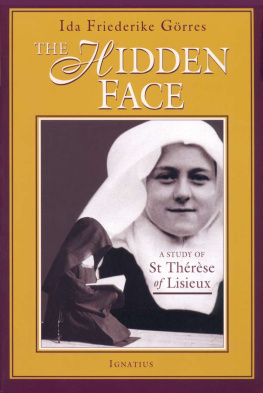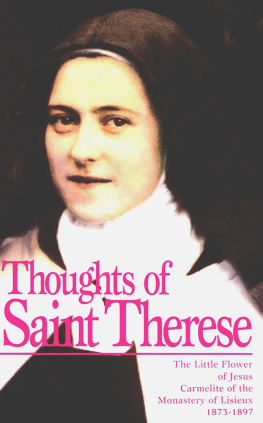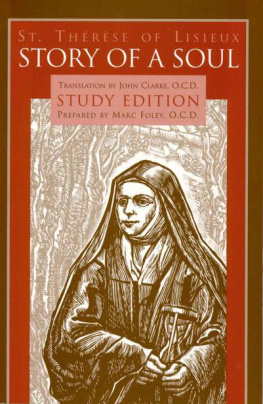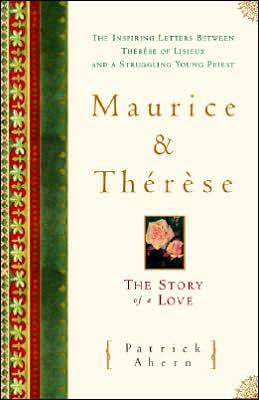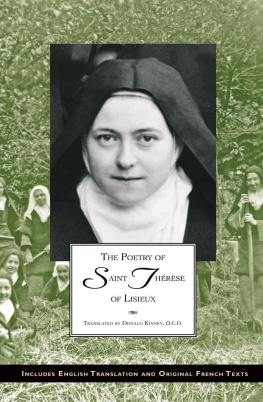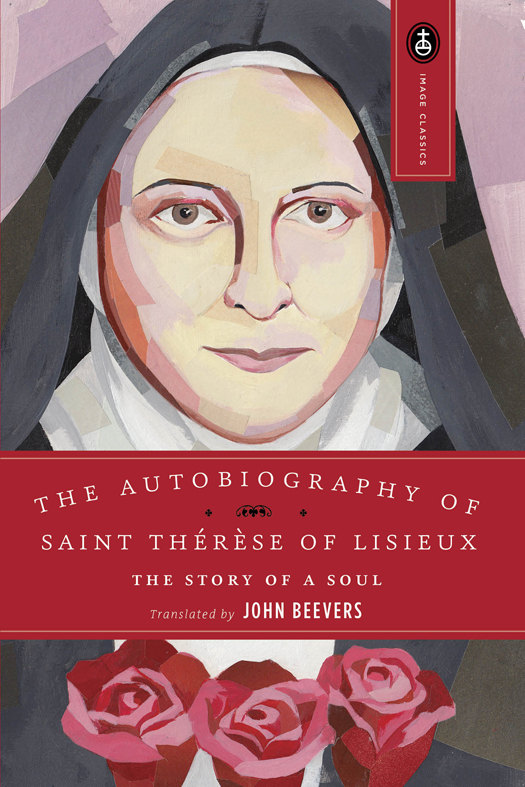Copyright 1957 by Image, a division of Random House LLC
Preface copyright 2001 by Patrick Ahern
Study Guide copyright 2013 by Image, a division of Random House LLC
All rights reserved.
Published in the United States by Image, an imprint of the Crown Publishing Group, a division of Random House LLC, a Penguin Random House Company, New York.
www.crownpublishing.com
IMAGE is a registered trademark and the I colophon is a trademark of Random House LLC.
First Image edition published September 1957 by special arrangement with Doubleday.
This Image edition published August 2001.
Nihil Obstat:
John A. Goodwine, J.C.D., Censor Librorum Imprimatur:
Francis Cardinal Spellman, Archbishop of New York May 24, 1957
ISBN 978-0-385-02903-2
eBook ISBN: 978-0-307-77808-6
Library of Congress Catalog Card Number: 57-10467
v3.1_r1
Contents
The translation of biblical quotations used throughout this edition of The Autobiography of St. Thrse is from the Knox and Douay versions of the Bible. For the material used from the Knox version, grateful acknowledgment is hereby made to Sheed and Ward, Inc., for selections from the Old Testament, in the translation of Monsignor Ronald Knox, copyright 1950, Sheed and Ward, Inc., New York; from the New Testament, in the translation of Monsignor Ronald Knox, copyright 1944, Sheed and Ward, Inc., New York.

INTRODUCTION
At half past eleven on the night of January 2, 1873, Marie Franoise Thrse Martin was born at Alenon, a small town in the north of France.
Just under twenty-five years later, at about twenty minutes past seven on the evening of September 30, 1897, she died, a nun, in the infirmary of the Carmel of Lisieux, another town in Normandy.
Only a handful of people knew anything of her during her short life, for she entered Carmel when she was fifteen, and few knew or cared that she was dead.
Now she is known and venerated throughout the world as St. Thrse of the Child Jesus.
She was canonised by Pius XI on May 17, 1925, a mere twenty-eight years after her death. The next year she was declared, with St. Francis Xavier, the principal patron of all missionaries and missions. Later she was declared the secondary patron of France with St. Joan of Arc.
Never has there been an apotheosis so swift and so complete. It is an amazing business no matter how one looks at it. We have this girl born into an obscure middle-class family in a small provincial town; there was nothing apparently remarkable about her intelligence; in her early years she was very shy and moody; and, to crown it all, she vanished behind a convent wall at the age of fifteen and died a few years later. Yet now she is invoked by millions every day and her statue stands in thousands of churches.
How has it happened? Well, it is, of course, essentially the work of God, but God does not reject very ordinary means to accomplish His will. Here He shows a book, the book which follows this introduction. As Benedict XV said, St. Thrse could not have fulfilled her mission without the world-wide circulation of The Story of a Soul.
I will return to this book, but first I must give a few more details of her life and surroundings which she does not give.
Her father, Louis Martin, was a watchmaker by trade. In his youth he believed he had a vocation to the monastic life, but when he was thirty-five, he married a young woman of Alenon, Zlie Marie Gurin. She was a lacemaker and she, too, had sought to enter religion. They had nine children. Two boys and two girls died in infancy, and they were left with five daughters. Their last child was Thrse and for a time it seemed that she would die. Soon after her birth she had to leave Alenon and stay for a year with a wet nurse in a nearby hamlet. This stay in the country turned her into a lively, healthy child. From her own story we see in what reverence and affection she held her parents, but it is perhaps not fully realised just how great a part the teaching and example of her father and mother played in her life. In all unessential matters they were a narrow-minded couple and we should find their taste in art and literature deplorable. Neither Alenon nor Lisieux was at that time a particularly gay placeusing gay in its worldly sense. But the Martin family and their relatives, the Gurins, took no part in what little gaiety there was. Louis and Zlie Martin concerned themselves with three things and three things onlythe Church, their family, and their work. Suitable recreation had, of course, its place in their lives, but no time was wasted in chasing so-called pleasures. Nowadays such a life seems to many far too narrow and circumscribed. Yet a life spent in serving God and performing all the duties of ones state in life is immeasurably fuller, richer, and happier than one passed in worldly activities. Such was the life the Martins led and so it was a wholly Christian life. There was nothing narrow or provincial about the Christianity of the Martins. Their dress, their manners, their vocabulary, and their tastes were all unsmart and unfashionable, but how unimportant that is when we consider the depth, the passion, and the vitality of their religious life. Thrse never had to unlearn anything about the Christian way of life after her entry into Carmel. All she had seen and heard of it in her natural family remained valid when she joined the supernatural family of Carmel. As she grew older, her prayers and meditation and her life of heroic sanctity brought her a steadily deepening spiritual insight, but her soul saw nothing different from what it had seen during its early, formative years. It saw more clearly and understood more fullythat is all.
It must not be thought that the childhood of Thrse was in any way dull or repressed. It was full of fun. Her autobiography is TheStory of a Soul and so, very naturally, it omits many of the ordinary, everyday details of her life. When she was fifteen, she wrote: I want to be a saint. She has magnificently fulfilled this desire. But when this saint was a child, she went for holidays to the seaside and enjoyed shrimping and donkey rides. She kept silkworms, rabbits, doves, a magpie, and goldfish, and a spaniel called Tom was a special favourite of hers. She was a great mimic and entertained her family with her imitations of people they knew. Her life was holy; it was never marred by false piety. She was good but never priggish. Yet running parallel with all these usual external activities of normal childhood was an intense spiritual life. We all know, of course, that St. Thrse lived for only twenty-four years, but though we know this, we still too often fail to appreciate her astonishing precocity in spiritual affairs. We can read a letter she wrote to her cousin in the summer of 1887 when she was fourteen. Its main news is that eight of her silkworms had died and it is a typical letter of a fourteen-year-old girl, quite trivial and slightly facetious. Yet, that same summer, as she tells in The Story of a Soul, this experience happened to her:
One Sunday when I was looking at a picture of Our Lord on the Cross, I saw the Blood coming from one of His hands, and I felt terribly sad to think that It was falling to the earth and that no one was rushing forward to catch It. I determined to stay continually at the foot of the Cross and receive it. I knew that I should then have to spread It among other souls. The cry of Jesus on the CrossI am thirstyrang continually in my heart and set me burning with a new, intense longing. I wanted to quench the thirst of my Well-Beloved and I myself was consumed with a thirst for souls. I was concerned not with the souls of priests but with those of great sinners which I wanted to snatch from the flames of hell.




